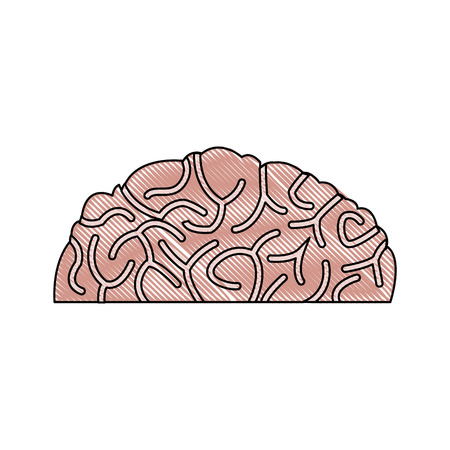Understanding Depression in America
Depression is one of the most common mental health challenges facing people in the United States today. According to recent studies, millions of Americans experience symptoms of depression each year, affecting not only their emotional well-being but also their relationships, work, and daily life. This section provides an overview of how widespread depression is, what risk factors are most relevant in America, and how American culture influences the way people view and manage depression.
How Common Is Depression?
Depression affects people from all walks of life. The Centers for Disease Control and Prevention (CDC) estimates that about 1 in 6 adults will have depression at some point in their life. It’s especially prevalent among young adults and older individuals, but anyone can be affected regardless of age or background.
| Group | Prevalence Rate |
|---|---|
| Adults (overall) | ~17% |
| Young Adults (18-25 years) | ~21% |
| Older Adults (65+ years) | ~8% |
| Women | Higher risk than men |
| LGBTQ+ Community | Higher risk due to discrimination/stress |
Main Risk Factors for Depression in the U.S.
Certain factors make it more likely for someone to experience depression. In America, these often include:
- Genetics: Family history of depression or other mental illnesses increases risk.
- Life Events: Stressful events like divorce, job loss, or trauma can trigger depression.
- Chronic Illness: Conditions such as diabetes or heart disease are linked with higher rates of depression.
- Poverty: Financial stress and lack of access to healthcare play a role.
- Cultural Pressures: Social expectations, stigma, and discrimination impact mental health.
Cultural Perceptions of Depression in the U.S.
The way Americans think about depression has changed over time. While there is more awareness now than ever before, stigma still exists in many communities. Some people may feel pressure to “tough it out” instead of seeking help. Others might worry about being judged if they talk about their struggles.
The Role of Therapy in American Culture
Therapy is becoming more accepted as a normal part of self-care in the U.S., especially among younger generations. Cognitive Behavioral Therapy (CBT), in particular, is widely recommended by doctors and mental health professionals because it helps people understand and change negative thought patterns that contribute to depression.
2. What is Cognitive Behavioral Therapy (CBT)?
Cognitive Behavioral Therapy, often called CBT, is a type of talk therapy that helps people manage their mental health by changing the way they think and behave. It’s one of the most common and well-researched treatments for depression in the United States. Many Americans find CBT appealing because it’s practical, focused on solutions, and doesn’t require long-term commitment.
How Does CBT Work?
CBT works on the idea that our thoughts, feelings, and behaviors are all connected. When we’re depressed, negative thoughts can create a cycle that makes us feel worse. CBT teaches you how to break this cycle by recognizing unhelpful thinking patterns and learning healthier ways to respond.
Core Principles of CBT
| Principle | What It Means | Example |
|---|---|---|
| Cognitive Restructuring | Identifying and challenging negative thoughts | If you think “I’ll never get better,” CBT helps you question this thought and replace it with something more realistic like “Recovery takes time, but I can improve.” |
| Behavioral Activation | Encouraging positive actions to improve mood | Instead of staying in bed all day, CBT might suggest small activities like taking a walk or calling a friend. |
| Problem-Solving Skills | Learning step-by-step ways to tackle everyday challenges | If you’re feeling overwhelmed at work, CBT can help you break tasks down and address them one at a time. |
| Goal Setting | Setting realistic, achievable goals for recovery | Rather than aiming to “feel happy every day,” you might set a goal to enjoy one activity this week. |
Main Components of CBT Sessions
- Structured sessions: Every session has a clear agenda so you know what to expect.
- Homework assignments: You’ll practice new skills between sessions—like tracking your moods or trying out new coping strategies.
- Collaborative approach: You and your therapist work together as a team to find what works best for you.
- Short-term focus: Most CBT programs last between 8-20 sessions, making it accessible for many busy Americans.
The American Experience with CBT
CBT resonates with many people in the U.S. because it’s straightforward and action-oriented. It fits well with values like independence and self-improvement. Whether done in-person or through online platforms, CBT offers flexible options that fit modern American lifestyles.

3. How CBT Addresses Symptoms of Depression
Cognitive Behavioral Therapy (CBT) is a widely used treatment for depression in the United States because it offers practical tools that help people manage their symptoms and improve their quality of life. The core idea behind CBT is that our thoughts, feelings, and behaviors are closely connected. When someone struggles with depression, negative thought patterns can make symptoms worse. CBT helps individuals recognize these patterns and learn healthier ways to respond.
Recognizing Negative Thought Patterns
One of the first steps in CBT is learning to identify unhelpful or distorted thinking. People with depression often have automatic thoughts that are overly negative or self-critical. For example, someone might think, “I’m a failure,” or “Nothing will ever get better.” CBT teaches people to notice when these thoughts occur so they can start to address them.
Common Types of Negative Thinking in Depression
| Type of Thought | Example |
|---|---|
| All-or-Nothing Thinking | “If I’m not perfect, I’ve failed.” |
| Overgeneralization | “I didn’t do well on one project, so I’ll never succeed.” |
| Catastrophizing | “If something goes wrong, it will be a disaster.” |
| Personalization | “It’s my fault if my friends are upset.” |
Challenging Unhelpful Thoughts and Behaviors
After identifying negative thought patterns, CBT encourages individuals to challenge them. This involves looking for evidence that supports or contradicts these thoughts and considering alternative perspectives. For instance, instead of thinking “I can’t do anything right,” a person might learn to say, “I made a mistake this time, but I’ve done well before.” This shift in thinking helps reduce feelings of hopelessness and builds self-confidence.
CBT Techniques Used in Depression Recovery
| Technique | Description | How It Helps |
|---|---|---|
| Cognitive Restructuring | Examining and re-framing negative thoughts into more balanced ones. | Reduces self-criticism and negative mood. |
| Behavioral Activation | Encouraging participation in enjoyable or meaningful activities. | Lifts mood by increasing positive experiences. |
| Problem-Solving Skills Training | Developing strategies to cope with daily challenges. | Builds confidence and reduces stress. |
| Mindfulness Exercises | Focusing on the present moment without judgment. | Lowers anxiety and increases emotional awareness. |
The American Approach to CBT for Depression Recovery
In the U.S., therapists often personalize CBT sessions to fit each person’s needs and cultural background. Therapists work together with clients as a team, helping them set realistic goals and practice new skills both during sessions and at home. Many Americans appreciate the straightforward approach of CBT—it’s practical, solution-focused, and provides clear steps for managing depression day by day.
4. CBT in Everyday American Life
How CBT Fits into Daily Routines
Cognitive Behavioral Therapy (CBT) is not just something you do at a therapist’s office—it can become a natural part of everyday life for many Americans. By learning to identify negative thought patterns and replace them with healthier ones, people can manage depression more effectively at home, at work, and with family. Let’s see how CBT skills are used in real-life situations across America.
Real-Life Examples
| Setting | CBT Strategy | Example |
|---|---|---|
| Home | Journaling & Thought Records | Writing down stressful thoughts after a tough day, then challenging whether those thoughts are true or helpful. |
| Workplace | Behavioral Activation | Scheduling small, manageable tasks to avoid feeling overwhelmed and gradually increasing productivity. |
| Family Life | Communication Skills | Using “I feel” statements during disagreements to express emotions clearly and avoid misunderstandings. |
| Social Settings | Exposure Techniques | Gradually attending social events, starting with small gatherings to build confidence and reduce anxiety. |
Benefits of Integrating CBT into American Life
- Improved Self-Awareness: People become more aware of their thoughts and feelings, making it easier to catch negative spirals early.
- Better Relationships: Practicing healthy communication leads to fewer conflicts and more supportive interactions with family and friends.
- Work-Life Balance: Managing stress through CBT techniques helps employees stay productive without burning out.
- Lifelong Coping Skills: CBT strategies can be used anytime—whether facing job loss, parenting challenges, or daily stressors—empowering individuals throughout life’s ups and downs.
A Day Using CBT: An American Example
Susan, a working mom in Texas, starts her day by checking in with her mood using a simple thought record app. At work, she notices negative self-talk before a meeting and uses a CBT technique to challenge the thought: “I’m not good enough.” She reminds herself of past successes instead. At home, when her teenager is upset, Susan uses active listening—a skill she learned in therapy—to support her child. Before bed, she reflects on her day and plans one small enjoyable activity for tomorrow, keeping her recovery on track. This is how CBT fits naturally into daily life for many Americans.
5. Accessing and Maximizing CBT for Depression Recovery
Finding Qualified CBT Practitioners in the U.S.
When looking for Cognitive Behavioral Therapy (CBT) to help with depression recovery, it’s important to find a qualified professional who truly understands your needs. In the U.S., there are several ways you can connect with a licensed CBT provider:
| Resource | Description | How to Use |
|---|---|---|
| Psychology Today Directory | A popular online directory of therapists across the U.S. | Search by zip code, specialty, and insurance coverage. |
| American Psychological Association (APA) | The APA website lists licensed psychologists in your area. | Use their locator tool to find CBT-certified therapists. |
| Your Insurance Provider | Most insurance companies have lists of in-network therapists. | Check your provider’s website or call for recommendations. |
| Primary Care Physician | Your doctor can refer you to trusted mental health professionals. | Ask for referrals based on your specific symptoms and needs. |
| Employee Assistance Programs (EAP) | Many workplaces offer EAPs that include therapy sessions. | Contact your HR department for confidential support options. |
Combining CBT with Other Treatments
CBT is highly effective, but many people benefit from combining it with other approaches for a more well-rounded recovery. Here are common combinations:
- Medication: Antidepressants like SSRIs can work alongside CBT to help manage symptoms, especially in moderate to severe cases.
- Lifestyle Changes: Regular exercise, a balanced diet, and good sleep hygiene support brain health and mood stability.
- Support Groups: Group therapy or peer-led support groups offer community encouragement and shared experiences.
- Mindfulness Practices: Techniques like meditation or yoga can help manage stress and improve emotional regulation when paired with CBT strategies.
Sample Treatment Plan Table
| Treatment Component | Description |
|---|---|
| Cognitive Behavioral Therapy (CBT) | Main therapy focusing on thoughts and behaviors related to depression. |
| Medication (if needed) | Prescription antidepressants managed by a psychiatrist or primary care doctor. |
| Lifestyle Adjustments | Exercise routines, healthy eating, and structured daily schedules. |
| Peer Support/Group Therapy | Sharing experiences and progress in a supportive environment. |
| Mindfulness & Relaxation Techniques | Meditation, breathing exercises, or gentle movement practices. |
Tips for Long-Term Recovery with CBT
- Stay Consistent: Attend sessions regularly and complete any “homework” or practice assignments between visits. Progress takes time and steady effort.
- Create a Support System: Let friends or family know about your treatment so they can encourage you along the way.
- Keep a Journal: Tracking your mood, thoughts, and triggers helps reinforce what you learn in therapy and spot patterns over time.
- Pace Yourself: Recovery isn’t linear—expect ups and downs. Celebrate small victories and be gentle with yourself during setbacks.
- Practice Skills Daily: Apply CBT techniques like challenging negative thoughts or practicing relaxation every day, even outside therapy sessions.
- Check In Periodically: After completing active therapy, occasional check-ins with your therapist can help maintain progress and catch early signs of relapse.
Your Path Forward
If you’re considering CBT for depression recovery, remember that reaching out is the first step. There are many resources available across the U.S., and combining therapy with healthy habits greatly improves your chances of long-term success. Stay proactive, ask questions, and know that support is always within reach as you move toward better mental health.


